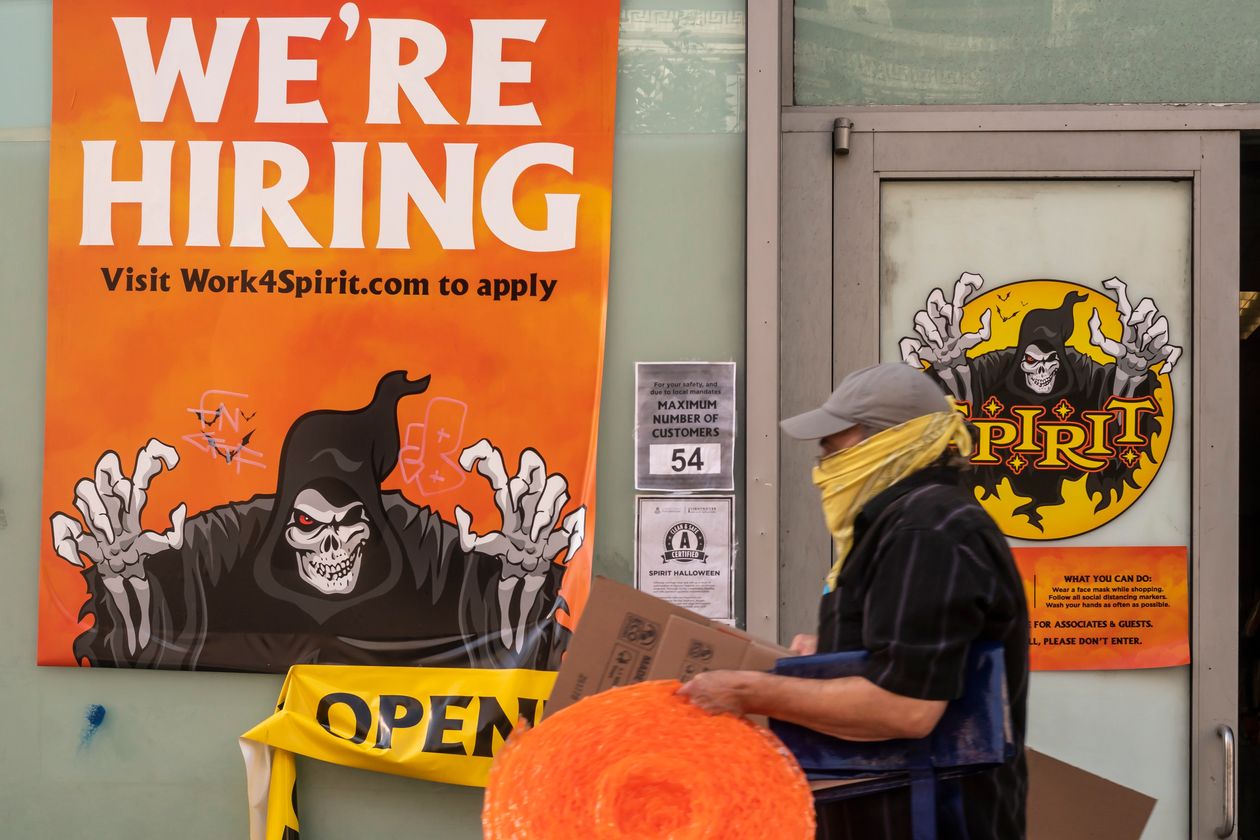By Sarah Chaney, Wall Street Journal–
Unemployment claims held steady at a historically high 870,000 last week, suggesting the labor market continues to slowly recover from the coronavirus pandemic.
Jobless claims are down significantly from a peak of near 7 million in March but have stagnated at just over 800,000 in recent weeks. That is four times the levels logged before the virus hit this spring, according to Labor Department data.
The high number of claims is a sign that layoffs have continued at a high rate, though many workers are also returning to their previous jobs or finding new ones. Re-employment has contributed to a decline in the number of people collecting unemployment benefits through regular state programs, which cover most workers. So-called continuing claims decreased by 167,000 to about 12.6 million for the week ended Sept. 12.
“We’re continuing to see healing in the labor market, but the pace by which we’re seeing recovery is slowing,” said Kathy Bostjancic, an economist at Oxford Economics.
Though the economy has regained about half of the jobs lost when the pandemic took hold in March and April, hiring has cooled in recent months. Economists expect the initial hiring spurt from business reopenings to ease as state restrictions are lifted at a slower pace than in early summer.
“We’re getting to that point where the easy hiring is behind us,” said Ryan Sweet, an economist at Moody’s Analytics. “This next leg of the recovery is going to be much more driven by the underlying strength of the economy rather than businesses just recalling workers.”
Many employers brought back a portion of their furloughed employees but are finding sales are too weak to raise employment to precrisis levels.
Peter Merriman reopened four of the nine restaurants he owns across Hawaii in August, but slow sales meant he could hire back only about 40% of the staff who were working at those locations before the pandemic began. He said sales at those restaurants, which operate under the Merriman’s Restaurants brand, are down about 80% from the same period last year.
“It’s really scary,” Mr. Merriman said. “We know that we’ll eventually come back, it’s just a question of when and how.”
Many workers are experiencing monthslong spells of unemployment. At the end of August, about 1.5 million individuals were collecting benefits through a federal program that provides an additional 13 weeks of benefits for people who run through the benefits’ duration set by states. Benefits last for six months in many states.
Millions of workers are collecting jobless benefits through a federal pandemic program for the self-employed, gig workers and others not typically eligible for unemployment aid. At the end of August, the number seeking benefits through this program exceeded the number in state programs, which cover about 90% of U.S. workers. That has caused some economists to be skeptical about the pandemic claims figures.
In addition to the federal emergency programs, Congress also passed legislation this spring authorizing federal funding for an additional $600 a week in unemployment benefits. After those benefits expired, President Trump signed an executive order last month to replace them with an additional $300. The $300 top-off payments will only last up to six weeks, and Congress has yet to reach an agreement on a new federal jobless benefit.
—Kim Mackrael contributed to this article.


Leave A Comment
You must be logged in to post a comment.